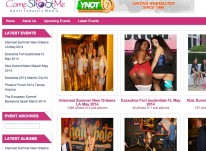Report: LGBTQ Community Hit Hardest by ‘Revenge Porn’
 NEW YORK – Four percent of U.S. internet users — roughly 10.4 million Americans — have been a victim of “revenge porn” through threats or actual posting of sensitive images. Members of the LGBTQ community are targeted proportionately more often than any other group, with 15 percent of internet users who identify as LGBTQ saying someone has threatened to post an explicit image an image of them; 7 percent say someone actually has posted such an image.
NEW YORK – Four percent of U.S. internet users — roughly 10.4 million Americans — have been a victim of “revenge porn” through threats or actual posting of sensitive images. Members of the LGBTQ community are targeted proportionately more often than any other group, with 15 percent of internet users who identify as LGBTQ saying someone has threatened to post an explicit image an image of them; 7 percent say someone actually has posted such an image.
The statistics are contained in a report published in December by the Data & Society Research Institute and the Center for Innovative Public Health Research.
The report, “Nonconsensual Image Sharing,” is based on a nationally representative telephone survey and offers the first-ever national data on the proportion of American internet users ages 15 and older who have experienced or been threatened with revenge porn, defined as the showing, sending or posting of nude or nearly nude photos or videos without the consent of the person pictured.
“This is the first national data that can tell us how many people have been affected by actual or threatened nonconsensual pornography,” said Amanda Lenhart, a researcher at Data & Society Research Institute and one of the authors of the report. “Nonconsensual pornography can have a devastating and lasting impact on victims, so it’s vital that we understand how common this is and who is affected.”
“Nonconsensual Image Sharing” compliments an earlier report covering the prevalence of online harassment and abuse more broadly.
“Our findings show that particular groups — such as young adults and lesbian, gay and bisexual Americans — are not only much more likely to be victims of nonconsensual pornography, but are more likely to experience a range of online harassment and abuse,” Lenhart said. “This includes other types of privacy violations, such as having their online or phone activity monitored, or having their passwords stolen or coerced by others.”
Even if images are never actually posted publicly, perpetrators may use threats to post such images as a method of controlling or intimidating victims. Young women are particularly likely to have experienced this: 10 percent of women under the age of 30 have had someone threaten to post explicit photos of them.
However, while women are more likely to be threatened with nonconsensual pornography, men and women are equally likely to have photos or videos of themselves actually posted. In fact, 4 percent of men and 6 percent of women under 30 have had someone post a nearly nude or nude image of them without their permission.
“It’s incredibly important that we recognize that men are also victims of nonconsensual pornography,” said Michele Ybarra, president and research director at the Center for Innovative Public Health Research and one of the authors of the report. “When we talk about victims of ‘revenge porn,’ male victims are often invisible — but hopefully this report will challenge us to think differently.”
The findings in the report are based on the results of a nationally representative survey of 3,002 Americans 15 and older conducted by Princeton Survey Research Associates International from May 17 through July 31, 2016. Respondents were contacted by landline and cell phone, and interviews were conducted in English and Spanish. The study was funded by a grant from the Digital Trust Foundation.













